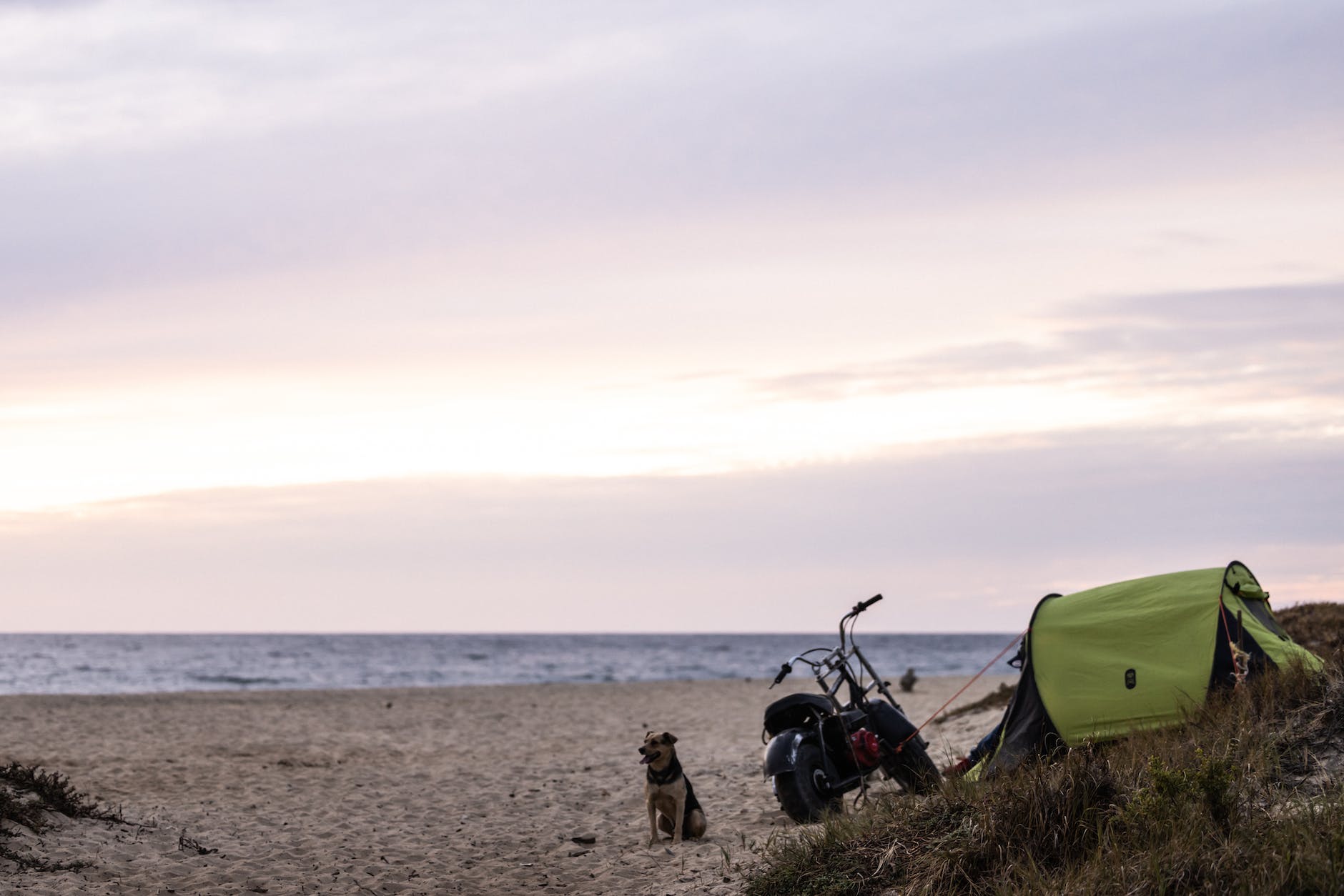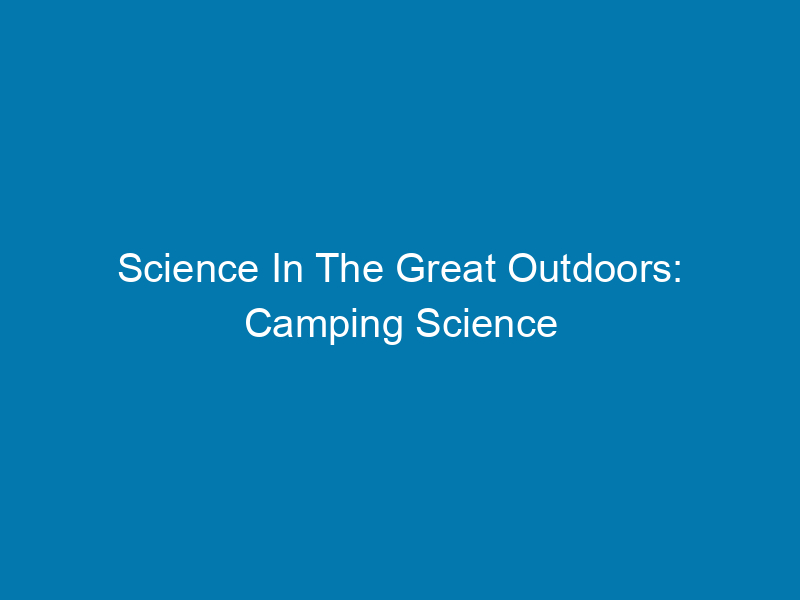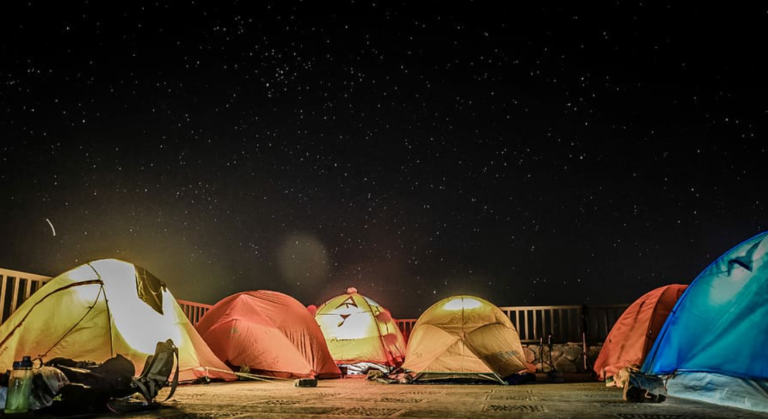Science In The Great Outdoors: Camping Science Activities For Preschoolers That Will Ignite Their Curiosity

You’ve been feeling cooped up lately, stuck inside your little home with your little ones. You’re itching to get outside, but you’re not sure what to do once you get there. Coincidentally, science is calling your name! And what better way to explore the wonders of science than by taking your preschoolers on a camping adventure?
Camping is the perfect opportunity for children to engage with nature and learn about the world around them in an exciting, hands-on way. With just a few simple activities, you can ignite their curiosity and spark a love for science that will last a lifetime. From exploring insects to experimenting with water and soil, there are endless opportunities for learning and discovery in the great outdoors. So pack up your tent, grab some bug spray, and get ready for some camping science fun!
Explore the World of Insects
You’re going to love discovering all the different bugs and creepy crawlies that live in the world around us! Bug hunting is an excellent way to introduce preschoolers to science while having fun outdoors. Encourage them to explore the campsite’s surroundings, looking under rocks, leaves, and logs for insects. Once they find a bug, help them identify it using a magnifying glass or a field guide book.
Insect identification is an exciting activity that will ignite your child’s curiosity. Talk about each bug’s unique features and how they help them survive in their environment. Get creative by making up stories about each insect and their adventures in the great outdoors. Afterward, consider releasing the bugs back into nature so that they can continue their lives outside of the little explorer’s hands. Now let’s discover the wonders of the night sky!
Discover the Wonders of the Night Sky
Take a moment to lay back on your blanket, look up at the dark sky above you, and witness the twinkling stars that make up the breathtaking night sky. Stargazing is a great way to introduce preschoolers to astronomy and ignite their curiosity about the wonders of space. Here are some stargazing tips and constellation crafts that will help your little ones explore the night sky:
- Stargazing Tips:
- Choose a clear night with minimal light pollution.
- Use binoculars or a telescope to get a closer look at celestial objects.
- Look for recognizable constellations like Orion, Ursa Major (the Big Dipper), and Cassiopeia.
- Constellation Crafts:
- Use black construction paper, chalk pastels, and white paint to create your own starry night sky painting.
- Make constellation flashcards by drawing the stars of each constellation on index cards and labeling them.
By encouraging your preschooler’s fascination with space through stargazing tips and fun crafts, you can inspire them to continue exploring science in nature. In the next section, we’ll show you how to experiment with water and soil for even more outdoor scientific discovery.
Experiment with Water and Soil
Get ready to have some fun with water and soil as you explore the wonders of nature and discover new ways to play outside. One exciting activity you can do is water filtration. Collect some dirty water from a nearby stream or puddle and challenge your preschooler to clean it up using natural materials like sand, rocks, and charcoal. As they experiment with different layers and observe how the water changes, they will learn about the science behind filtering water.
Another fascinating activity is exploring soil erosion. Take a walk through a park or forest and look for areas where the ground has been eroded by rain or wind. Encourage your child to touch the soil, feel its texture, and ask questions like “Why do you think this happened?” This will spark their curiosity about how natural processes shape our environment. Through these activities, your preschooler will develop an appreciation for the power of nature while having fun playing outdoors.
Now that you’ve experimented with water and soil, it’s time to engage in sensory exploration!
Engage in Sensory Exploration
Start by using your senses to observe nature. Take a walk and encourage your preschooler to touch, smell, see, hear and even taste what they find! Consider creating a nature scavenger hunt where your child can use their senses to explore the outdoors and find specific items on a list.
Use Your Senses to Observe Nature
You’ll be amazed at what you can discover about the world around you by using your five senses to observe nature. Take a walk in the woods or visit a local park with your preschooler and encourage them to use their eyes, ears, nose, hands, and even taste buds to explore. Here are three ways you can help your child engage their senses:
- Nature art: Encourage your child to collect different natural materials like leaves, flowers, and sticks to create a piece of art. Help them notice the different colors, shapes, and textures of each item they choose.
- Outdoor music: Listen for the sounds of nature like birds chirping or leaves rustling in the wind. Use these sounds as inspiration for creating your own outdoor music with items like rocks or sticks.
- Smell exploration: Take time to smell different plants or flowers as you walk through nature. Talk about how each scent makes you feel and if it reminds you of anything else.
As you continue exploring nature with your preschooler using their senses, try creating a nature scavenger hunt for even more fun!
Create a Nature Scavenger Hunt
If you’re looking to enhance your child’s sensory exploration of nature, consider creating a fun scavenger hunt that incorporates all five senses. This activity is perfect for preschoolers who are just starting to learn about their environment and the different elements that make up the great outdoors. To start, grab a notebook or a nature journal and create a list of things you want your child to find during the scavenger hunt.
Include items like different colored leaves, pine cones, rocks with unique shapes or textures, flowers with strong scents, and anything else you think would be interesting for your child to discover. As they explore their surroundings, encourage them to sketch what they see in their journal or create outdoor art projects using the materials they collect. This will not only help them remember what they found but also give them an opportunity to express themselves creatively.
By participating in this nature scavenger hunt, your child will gain a deeper understanding of their environment while having fun at the same time. And once they’ve discovered everything on the list, it’s time to move on to our next activity – learning about weather and seasons!
Learn About Weather and Seasons
You’re about to discover fascinating insights into the natural rhythms of the world around you by exploring weather patterns and seasonal changes. This camping science activity is perfect for preschoolers who are curious about the environment. Start by talking about different seasons and how they affect our surroundings. Ask your little ones what they know about spring, summer, fall, and winter. Then, take them outside to observe the changes in nature during each season.
Next, discuss weather patterns with your kids. Teach them about clouds, wind, rain, and snow. Use simple experiments like making a windsock or a rain gauge to demonstrate these concepts in action. You can also watch videos or read books on weather phenomena together as a family. By doing this camping science activity with your preschooler, you’re helping them develop an appreciation for nature while building their knowledge of science at the same time!
Frequently Asked Questions
What are some safety precautions to take when camping with preschoolers?
When camping with preschoolers, safety should be your top priority. To ensure their wellbeing, it’s important to have proper supervision strategies in place. Keep an eye on them at all times and never let them wander off alone. Make sure you have a well-stocked first aid kit and know basic first aid tips for common injuries like cuts, scrapes, and insect bites. One rhetorical device that can emphasize the importance of safety is repetition – remind yourself and others of the potential dangers at every turn. By taking these precautions, you can give your little ones the freedom to explore and enjoy nature while keeping them safe.
How can camping science activities be adapted for children with disabilities?
If you’re looking to make camping science activities more accessible for children with disabilities, there are a few things to keep in mind. First, consider making accessible adaptations to any equipment or materials used. For example, if you’re using a magnifying glass for nature observation, choose one with a larger handle that’s easier to grip. Additionally, think about how the activity can be made more inclusive overall – perhaps by providing tactile experiences or using visuals in addition to verbal instructions. With some thoughtful planning and consideration, camping science activities can be enjoyed by kids of all abilities.
What are some resources for finding age-appropriate camping science activities?
Looking for age-appropriate camping science activities to ignite your child’s curiosity? There are plenty of resources available online and offline. Online communities like Pinterest and Facebook groups provide a wealth of ideas and inspiration from other parents, educators, and outdoor enthusiasts. Nature centers often offer educational programs and activities for children of all ages. You can also check out library resources such as books on camping and nature-related topics or visit educational websites like National Geographic Kids or PBS Learning Media for interactive learning experiences. With these resources at your fingertips, you’ll be able to plan an exciting outdoor adventure that will feed your child’s desire for exploration and freedom while promoting their love of science.
How can camping science activities be integrated into a preschool curriculum?
When it comes to integrating camping science activities into a preschool curriculum, you may be concerned about the practicality of taking young children out into the great outdoors. However, it’s important to remember the numerous benefits of camping for children, including improved mental health and physical fitness. Additionally, outdoor learning opportunities provide hands-on experiences that can deepen a child’s understanding of scientific concepts. By incorporating camping science activities into your preschool curriculum, you can help ignite your students’ curiosity while also fostering a love for nature and appreciation for the world around them.
What are some ways to make camping science activities more engaging for children who may not be interested in science?
To make camping science activities more engaging for children who may not be interested in science, try incorporating interactive demonstrations and creative experiments. Rather than simply explaining concepts, show them in action with hands-on activities that allow children to explore and discover on their own. Additionally, using storytelling can help capture their attention and imagination while relating scientific principles to real-world scenarios. Taking nature walks as part of the camping experience is also an excellent way to spark curiosity and engagement with the natural world around them. By allowing children the freedom to explore and learn at their own pace, they will develop a deeper appreciation for science and nature.
Conclusion
Congratulations! You’ve just unlocked a world of scientific wonder and exploration for your preschooler. By taking them camping, you’ve opened up a whole new avenue for learning and discovery. Think of it as embarking on an exciting adventure where every step you take brings new insights and discoveries.
Just like setting up camp requires teamwork, so does scientific discovery. By incorporating these camping science activities into your family’s outdoor adventures, you’re encouraging your little ones to work together, explore their surroundings, ask questions, and seek answers. Who knows? Your child might even discover a newfound love for science that will stay with them throughout their life. So go ahead, pitch that tent, start the fire, and let the scientific curiosity run wild!






